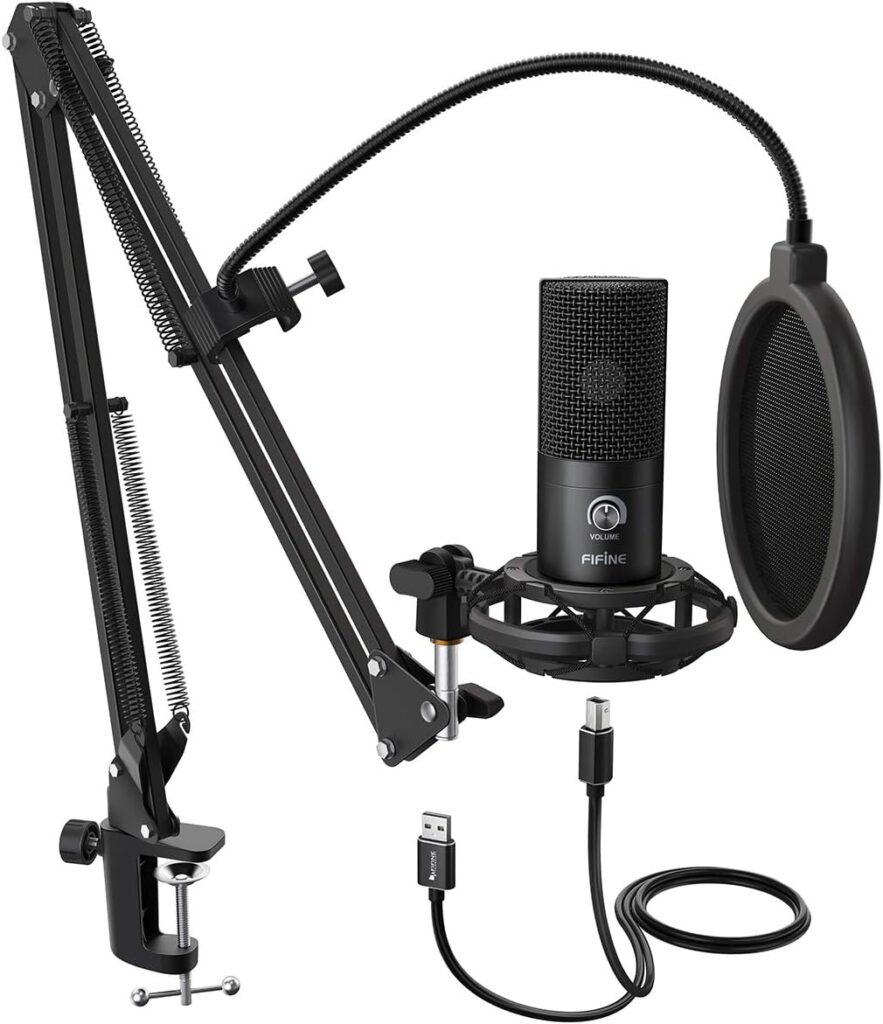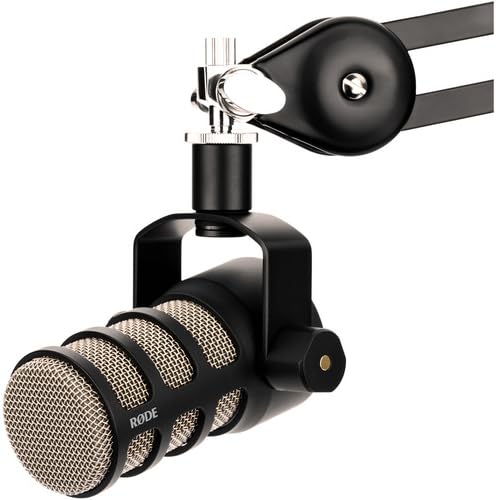Best Microphones Under $100 in 2024
If you are looking to kickstart your podcasting journey without breaking the bank? Choosing the right microphone is your first important step. For many of us launching a podcast involves a prudent approach, especially when it comes to expenses.
There are a lot of cost-effective podcast microphones that deliver exceptional audio quality, perfect for budding podcasters. In this guide, we delve into the 5 best budget-friendly podcast microphones—each equipped with a USB connection. Ready to find the perfect microphone that fits both your podcasting aspirations and your budget? Let’s dive in!
- Samson Q2U: Samson Q2U is a standout among budget-friendly podcast microphones. It delivers exceptional quality and a comprehensive kit at an unbeatable price. It is renowned for its dual connectivity options—USB and XLR. The Q2U caters to a wide range of recording setups, making it a go-to choice for beginners and experienced users. Priced below $100, this dynamic microphone is ideal for podcasting, while remaining incredibly portable and travel-friendly. View on Amazon

Key Features:
- Its dynamic microphone design keeps costs down without compromising audio quality, perfect for high-quality podcast recordings.
- It have dual connectivity with USB and XLR outputs allowing for versatile use, catering to both beginners and those looking to upgrade their setup in the future.
- It has a cardioid pickup pattern that focuses on capturing clear audio from the front while minimizing background noise, ensuring a professional sound quality for your podcast.
Pros:
- Budget-friendly: Offers premium features at an affordable price, making it accessible for podcasters on a budget.
- Versatile connectivity: USB and XLR options enable easy integration into various recording setups.
- Future-proof design: Designed to grow with your podcasting needs, allowing for upgrades while maintaining quality.
Cons:
- Limited accessories: While it includes essential equipment, additional accessories might be required for specific setups or preferences.
- USB-only recording might limit flexibility in professional setups requiring XLR connectivity exclusively.
The Samson Q2U stands out as one of the best podcast microphones for its price, boasting a cardioid pattern for focused audio capture and a renowned brand reputation in the industry. If you’re diving into podcasting and seeking a reliable, cost-effective microphone that evolves with your needs, the Q2U is a solid choice worth considering for your recording arsenal.
2. Fifine Studio Condenser USB Microphone: The Fifine Studio Condenser USB Microphone is a professional-grade microphone designed for studio-quality recordings, ideal for podcasting, streaming, voiceovers, and music production. It offers plug-and-play functionality via USB, making it accessible to beginners while still catering to the needs of more experienced users. View on Amazon.

Key Features:
- Plug-and-Play Convenience: Its USB connectivity allows for easy setup with both Mac and Windows systems without requiring additional drivers.
- Cardioid Polar Pattern: The microphone’s cardioid pickup pattern captures sound sources directly in front of it while minimizing background noise, perfect for single-person recordings.
- Headphone Monitoring: With a headphone jack for real-time monitoring, users can listen to their recordings without latency issues.
- Adjustable Stand: It comes with an adjustable tripod stand for versatile positioning and convenient usage.
Pros:
- Plug-and-Play: Simple setup with USB connectivity, eliminating the need for additional drivers or complex installation processes.
- Cardioid Pickup Pattern: Focuses on sound sources directly in front while minimizing background noise, suitable for single-person recordings and podcasts.
- Double Pop Filter: Reduces vocal plosives, ensuring clearer and more professional audio output.
- Long USB Cable: Provides an extensive 8.2-foot USB cable, offering flexibility in setting up the microphone according to user preferences.
Cons:
- Absence of Mute Button: The microphone does not include a mute button, which might be essential for some users requiring quick muting during recordings.
- Lack of LED Indicators: The absence of an LED indicator to signal when the microphone is powered on or actively recording might inconvenience users seeking visual cues for operational status.
Fifine Studio Condenser USB Microphone is a budget-friendly microphone that delivers commendable sound quality and essential accessories. While it may lack some advanced features but its affordability, sturdy build, and ease of use make it a great entry point for creators seeking professional-grade audio without a hefty price tag
Rode Podmic is an exceptional choice for redefining audio excellence in the realm of recording. Priced similarly to many USB microphones, it takes a divergent path by utilizing an XLR connection, aligning itself with professional studio-grade microphones. This dynamic cardioid microphone eschews the convenience of a direct USB connection, instead opting for an analog signal capture, akin to the industry’s top-tier equipment.
At just $99, its affordability opens the door to acquiring multiple units, ensuring consistently impeccable audio quality across various subjects or setups. Its commitment to simplicity empowers users to steer their recording setups and skills toward a more professional trajectory, making it an ideal choice for those seeking a seamless transition to a higher echelon of audio recording. View on Amazon

Key Features:
- 1. Dynamic Cardioid Pattern: Tailored to capture sound primarily from the front while minimizing background noise, ideal for podcasting and broadcasting.
- 2. XLR Connection: Unlike USB microphones, it uses an XLR connection, aligning it with professional studio-grade equipment for superior audio quality.
- 3. Affordability: Priced at $99, making it an accessible choice for creators seeking professional-grade audio without breaking the bank.
Pros:
1. Professional-Grade Sound: Offers studio-quality sound reproduction with tailored frequency response, ideal for podcasting, broadcasting, and vocal recordings.
2. Professional-Grade Sound: Offers studio-quality sound reproduction with a tailored frequency response, ideal for podcasting, broadcasting, and vocal recordings.
3. Dynamic Cardioid Pattern: Captures audio predominantly from the front while minimizing background noise, ensuring clear and focused recordings.
Cons:
1. No USB Connectivity: Lacks the convenience of plug-and-play USB connection, requiring users to set up with XLR-compatible devices.
2. Lack of Built-in Audio Filters: Unlike some other microphones, the Rode PodMic doesn’t come equipped with built-in audio filters, which might require additional external equipment or software to achieve certain audio effects or modifications.
Rode Podmic is a clear, uncolored signal, coupled with built-in features like damping and pop filters, which elevates the recording experience for podcasters and content creators. While lacking built-in audio filters, its flexibility in positioning and solid construction make it a compelling choice for those seeking superior sound reproduction without breaking the bank.
From podcasting to streaming, gaming to voiceovers, the Yeti Nano stands ready to capture your voice with clarity and precision. Featuring two condenser microphone capsules and multiple pickup patterns, it offers flexibility in recording options. View on Amazon

Key Feature:
- Cardioid and Omnidirectional Pickup Patterns: Offers the commonly used cardioid and omnidirectional pickup patterns, suitable for various recording scenarios like podcasting, streaming, and voiceovers.
- USB Connectivity: Connects easily to computers and laptops via USB, eliminating the need for additional drivers or software installations.
- Compact Design: A smaller and lighter version of the iconic Blue Yeti USB microphone, designed for portability without compromising on quality.
Pros:
- Compact Size: Smaller and lighter than its predecessor, enhancing portability without compromising on audio quality.
- 24-Bit Depth Audio: Offers high-resolution 24-bit depth audio capture, allowing for detailed and nuanced recordings.
- Software for Settings Adjustment: Includes software that allows users to adjust settings, providing flexibility in optimizing audio configurations according to specific needs.
Cons:
Scooped Midrange: Some users have reported a scooped midrange in the audio output, which might affect the overall tonal balance and depth of recordings.
- Poor Durability: There have been complaints about the microphone’s durability, with concerns raised about its long-term reliability and build quality.
- Occasional Glitching: Users have experienced occasional technical glitches or malfunctions, impacting the microphone’s consistent performance.